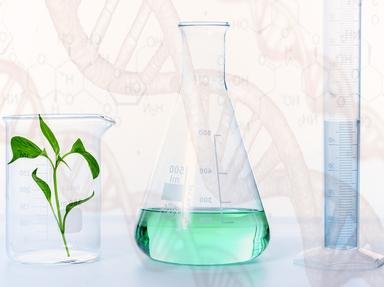Quiz Answer Key and Fun Facts
1. Which of these elements is in the s-block of the periodic table?
2. Which of the following is a non-electrolyte?
3. How many protons and neutrons are in a Carbon-13 isotope?
4. Which of the following is a valid set of quantum numbers?
5. What is the molality of a solution consisting of 0.359 moles of solute and 50g of solvent?
6. Brass is an alloy consisting of what two metals?
7. The formula for sucrose is C12H22O11. What is the oxidation number of carbon in this formula?
8. If an aqueous solution has a pH of 13.6, then it is which of these?
9. What intermolecular forces occur when a polar molecule interacts with a nonpolar molecule?
10. What phase change occurs when water becomes steam?
Source: Author
ebanks120
This quiz was reviewed by FunTrivia editor
rossian before going online.
Any errors found in FunTrivia content are routinely corrected through our feedback system.
